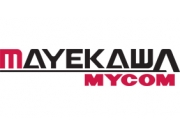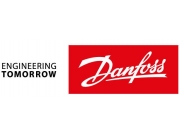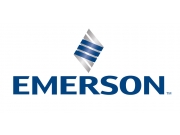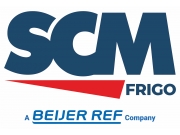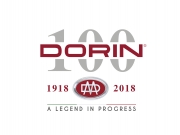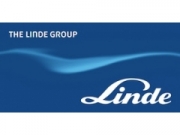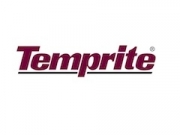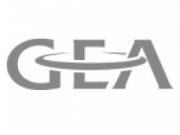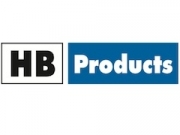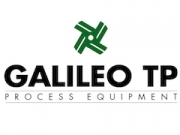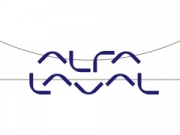Events
 |
Rob Arthur - Ammonia/CO2 Cascade Refrigeration System at a Defense Commissary Agency Project
PDF document
published on 12 June 2012
Rob Arthur presents a project that aimed to develop a commercial refrigeration system that was more energy efficient and more environmentally friendly then the standard refrigeration systems being used in U.S. grocery stores today. He shows that the ammonia/CO2 cascade system is predicted to be at a minimum 10% more energy efficient with very little global warming potential and no ozone depletion potential. Project sponsor is the Department of Energy through the Commercial Building Partnership programme that is managed by National Renewable Energy Lab (NREL).
view presentation
 |
James Armer (with Richard Heath) - Supervalu Development of Next Generation Refrigeration Systems: Application of Ammonia, CO2, and Propane
PDF document
published on 12 June 2012
CTA Architecs together with retailer SUPERVALU talkabout the opening of their first complete natural refrigeration store in US. Through application of original technologies and innovations with the natural refrigerants ammonia, carbon dioxide, and propane, an industry influencing solution is available. An on‐site comparison is made between the ammonia primary system and a redundant R407A primary system. The result from this comparison allows SUPERVALU and the industry to understand the achievable balance of Total Equivalent Warming Impact (TEWI), equipment and operating costs, maintenance considerations, and repeatability.
view presentation
 |
Sam Gladis - Industrial Ammonia Heat Pumps in Food Processing
PDF document
published on 12 June 2012
Sam Gladis presents one of Emerson's projects where food processor Krafts Food has installed an industrial ammonia heat pump at one of its US food processing facilities as a sustainable alternative to the use of fossil fuels for sanitary hot water production. Renewing the use of the heat rejected from their ammonia refrigeration system, the industrial heat pump reduced Krafts’ heating energy costs by 61%, reduced site energy consumption for heating by more than 79%, reduced condenser water consumption by 15 million gallons per year, and delivers a host of additional operational and maintenance savings. This presentation provides a description of the project, the expected results and savings, a detailed system description, experience with the operation and maintenance of the system, actual results, recommendations and conclusions.
view presentation
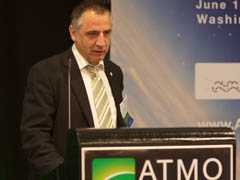 |
Alexander Cohr Pachai - Safe Ammonia System Design in Large Applications
PDF document
published on 12 June 2012
This presentation is about a selected number of installations using different natural refrigerant solutions in different applications in the US including an ice cream factory that has been equipped by JCI. It uses 80 tons of ammonia in the new installation and 30 tons in the old part of the buildings located close to a residential area. Another application presented will highlight results of using new equipment in a cascade system.
view presentation
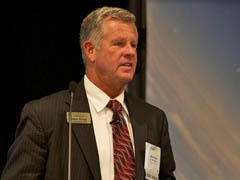 |
Merle G. Rocke (with Darin Massner) - Commercial and Industrial Hot Water from Transcritical CO2 Heat Pumps
PDF document
published on 12 June 2012
In his presentation, Merle Rocke shows together with Darin Massner, from Country Maid, a Midwestern commercial bakery, how they are implementing a transcritical CO2 heat pump system to significantly reduce its energy costs. The CO2 heat pump system is simultaneously producing high temperature hot water for washing baking equipment and cool, comfortable air conditioning for employees. Energy savings in excess of 50% are expected from this project. They are also showing early data from commercial operation.
view presentation
 |
Zahid Ayub - Latest Ultra Low Charge Ammonia Shell and Tube Evaporator
PDF document
published on 12 June 2012
Zahid Ayub's presentation shows results from a low charge ammonia evaporator that has been developed to cool process fluid on the tube side. He explains how ammonia is expanded on the shell side. The evaporator incorporates multi-stage distribution mechanism that results in even distribution of refrigeration along the bundle height resulting in thin film evaporation. The first commercial unit was installed on board a commercial fishing vessel in Chile. The chiller was designed for a capacity of 385 kW and the total refrigerant charge in the system is less than 18 kg. With several other projects in the commissioning phase, Mr Ayub explains the strong relevance for North America as regards the reduction of the ammonia charge to extreme minimum so the safety issue will be scaled down.
view presentation
Regulations, Standards and training |
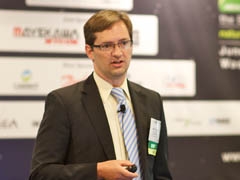 |
John Thompson - Montreal Protocol update and Natural Refrigerants
PDF document
published on 13 June 2012
Thompson discusses the international drivers for HFC alternatives including natural refrigerants. He provides an update on the progress with the phase out HCFCs, the rising HFC emissions and the HC phase-down North American amendment proposal to the Montreal Protocol. His presentation also describes the objectives of the recently formed Climate and Clear Air Coalition to Reduce Short Lived Climate Pollutants including HFCs.
view presentation
 |
Cindy Newberg - SNAP: Latest Developments on Alternatives; and Reducing Emissions
PDF document
published on 13 June 2012
Newberg provides an update on the latest developments with the US EPA’s Significant New Alternatives Policy (SNAP) Program. The programme currently has 15 to 20 active reviews, with the EPA looking at a number of refrigerants across the board: some are HFCs, some are HFOs, some are non-fluorinated, including hydrocarbons and CO2. The Agency is also looking at a variety of end-uses. Some end-uses that are moving fairly quickly and the EPA will be able to have some final determinations this year regarding residential AC, vending machines and retail food refrigeration. Newberg’s presentation also discusses the Responsible Appliance Disposal (RAD) Program that builds on safe disposal requirements to ensure recovery of ODS foam from appliances, as well as GreenChill, the EPA’s partnership with food retailers to reduce refrigerant emissions.
view presentation
 |
Ashley Armstrong - US DOE conversation standards and test procedures regarding refrigeration products and equipment
PDF document
published on 13 June 2012
Armstrong describes the benefits of the US Department of Energy’s (DOE) Appliance Standards Program that currently covers products responsible for 79% of residential building energy consumption, 46% of commercial building energy consumption, and approximately 19% of industrial energy consumption. In 2012, standards (either new or amdended) are ongoing for about 25 products types, including miscellaneous residential refrigeration products, commercial refrigeration equipment, single vertical AC & HP, walk-in coolers and freezers, packaged terminal AC & HP, and automatic commercial icemakers. Besides these, final rules have been issued for 8 products in FY 2012. Test procedures are ongoing for about 30 products in 2012, with final rules issued for 16 products in FY 2012. DOE invites stakeholders to actively participate in the regulatory process early and share information regarding alternative refrigerant research, especially where product performance and testing issues need to be considered.
view presentation


